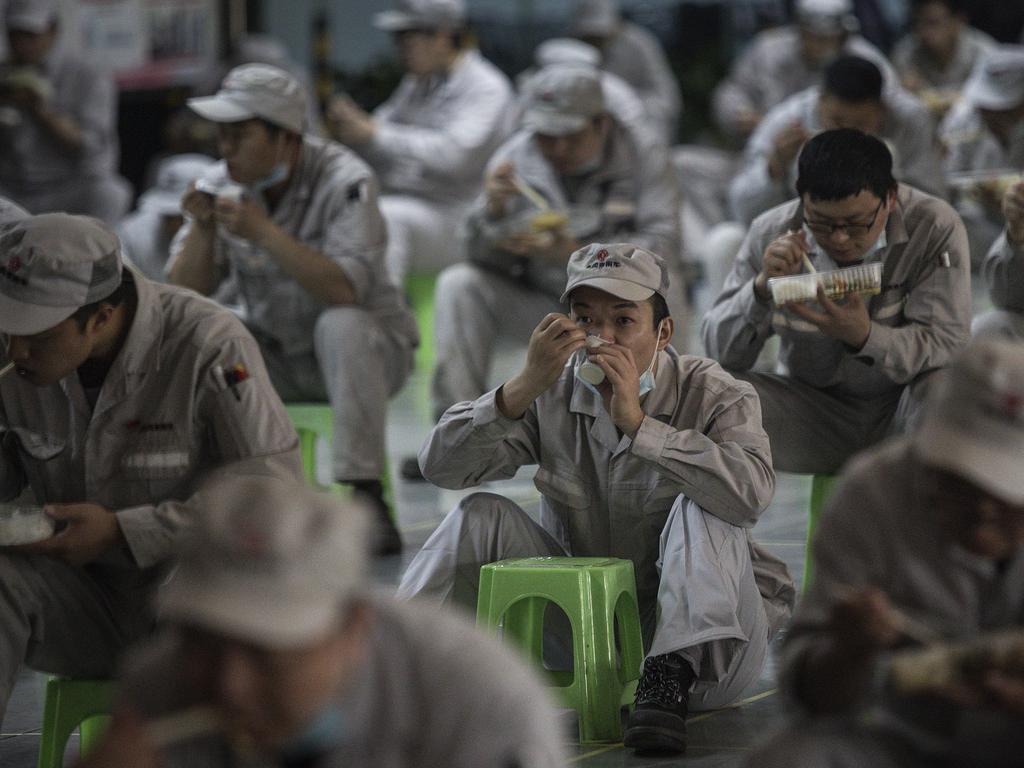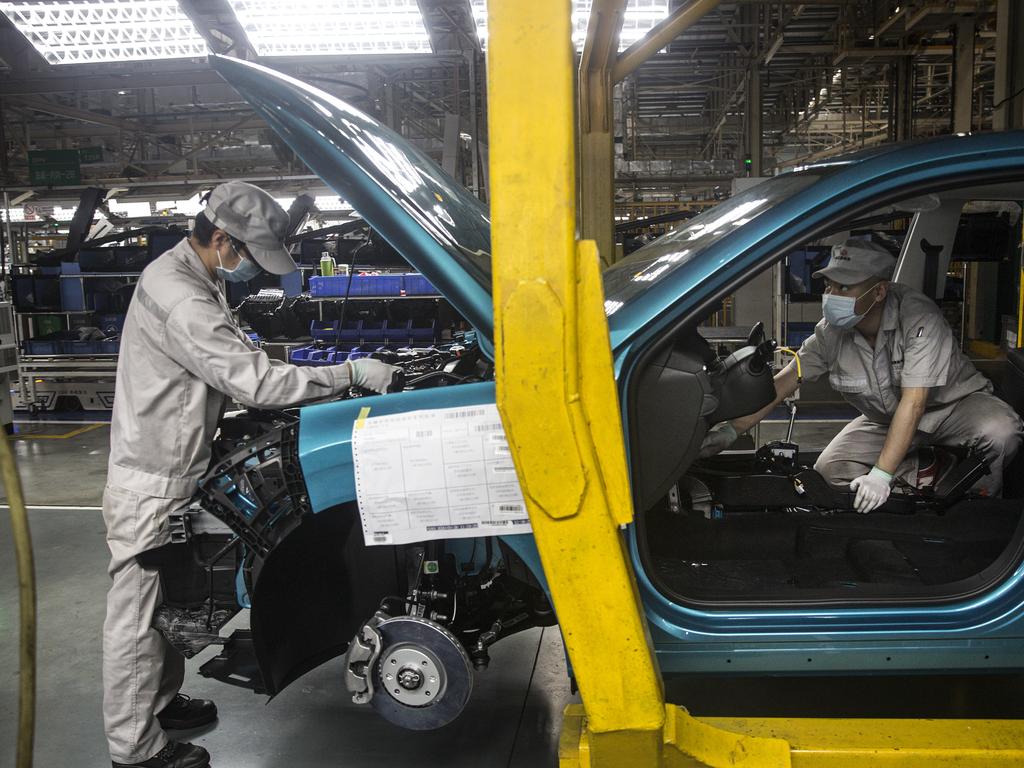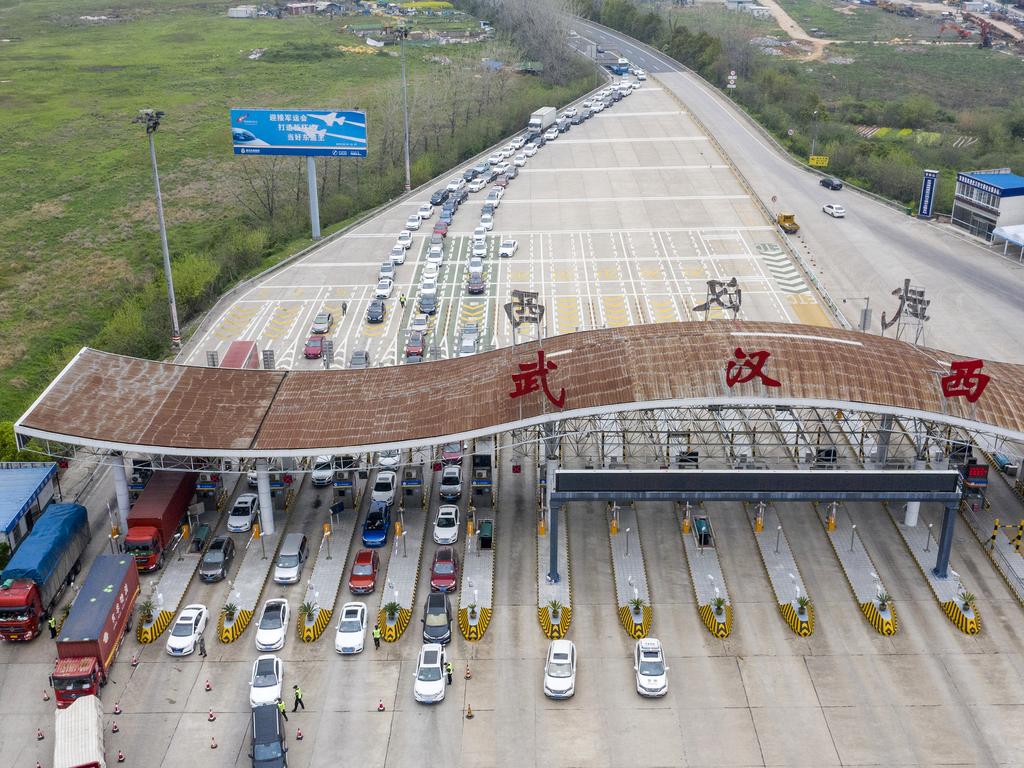Coronavirus China: Wuhan emerges from lockdown after 76 days
The epicentre of the coronavirus outbreak will emerge from lockdown after 76 days. Here’s what Wuhan did and why it worked.

The Chinese epicentre of the coronavirus pandemic emerged from a 76-day lockdown on Friday after drastic measures to contain the disease worked.
On Tuesday, China announced a lockdown of more than 50 million people in Hubei province would be lifted, allowing healthy residents to leave.
From April 8, residents of Wuhan itself will be able to leave the city with incoming trains allowed from Saturday. Schools, however, will remain closed.
It comes after China recorded a steep drop in the number of new infections of the virus which has seen more than 81,000 cases and 3200 deaths so far.
RELATED: Read the latest on coronavirus here
RELATED: Fatal mistake that saw the virus spread
Residents are now allowed to move around depending on a colour-based QR code that designates them green, yellow or red. Green are healthy and safe to travel, while yellow are those close to confirmed cases and may face restrictions. Red is for those who have a fever.
The dramatic turnaround means China’s biggest threat is now those bringing the virus into the country.
On Thursday, Chinese leader Xi Jinping schooled other G20 leaders on how to respond to the outbreak, as the epicentre spreads to the US and Europe.
So what did Wuhan do and how did it work? Here’s how China managed to get on top of coronavirus.

WHAT DID CHINA DO AND HOW DID THEY PULL IT OFF?
On December 31 last year, the Chinese Government announced the first cases of COVID-19, a new strand of coronavirus.
The government’s response was initially criticised for tending towards secrecy and cover-ups, however it quickly sprung into action and was later praised for its rigorous lockdown that has suppressed transmission.
MORE: Why Australia’s rise is ‘good news’
A World Health Organisation mission led by Dr Bruce Aylward and Dr Wannian Liang said there are three phases to China’s response and some crucial reasons why it worked.
The first stage included preventing cases spreading from Wuhan and Hubei by controlling the source of infection and blocking transmission. Wet markets were closed, the WHO was notified and the genome sequence of COVID-19 was shared on January 10 – 10 days after the virus was officially acknowledged.
The country developed protocol for diagnosis, treatment, surveillance, managing the disease spread and tracking down contacts. Wildlife markets were placed under strict surveillance and control.

The second stage involved reducing intensity and slowing down the cases – “flattening the curve”.
In Wuhan and throughout Hubei, China focused on treating patients, curbing the spread and classing it as an infectious disease which allowed border checks and quarantine for those with a fever.
On January 23, Wuhan went into lockdown with case isolation and treatment made even stronger. Events were cancelled, public health communications were stepped up and medical supply chains were strengthened. Hospitals were built in just a few short days and other venues repurposed into wards.
The third stage involved targeting cluster cases and ramping up policy implementation. Concrete protocols for treating and testing patients were introduced and mobile technology was used to strengthen contact tracing and managing “priority populations”.
At the same time, other provinces sent workers to Wuhan and financial compensation was planned for workers forced to close. Now, scientific work continues to develop vaccines and diagnostic tests and identify the exact source of the virus.

The WHO called China’s response the most “ambitious, agile and aggressive disease containment effort in history”.
“The strategy that underpinned this containment effort was initially a national approach that promoted universal temperature monitoring, masking and hand washing. However, as the outbreak evolved and knowledge was gained, a science and risk-based approach was taken to tailor implementation.”
MORE: Harsh truth about young people and virus
It said the approach worked because of the “deep commitment of the Chinese people to collective action in the face of this common threat”.
“At the individual level, the Chinese people have reacted to this outbreak with courage and conviction. They have accepted and adhered to the starkest of containment measures – whether the suspension of public gatherings, the month-long ‘stay at home’ advisories or prohibitions on travel.”

It comes as Australia grapples with containing the outbreak and ensuring the population accepts social distancing measures that many find arbitrary and difficult to understand.
As the disease marches across Europe and North America, the US has also attempted to lay the blame at China’s feet, touting missteps and cover-ups for the disease getting out of hand.
US Secretary of State Mike Pompeo said Beijing’s failure to share information “put thousands of lives at risk”.
RELATED: Trump refuses to take responsibility after downplaying threat
“My concern is that this cover-up, this disinformation that the Chinese Communist Party is engaged in, is still denying the world the information it needs so that we can prevent further cases or something like this from recurring again,” he said.
But WHO has taken a different view, saying: “China’s bold approach to contain the rapid spread of this new respiratory pathogen has changed the course of a rapidly escalating and deadly epidemic.”




